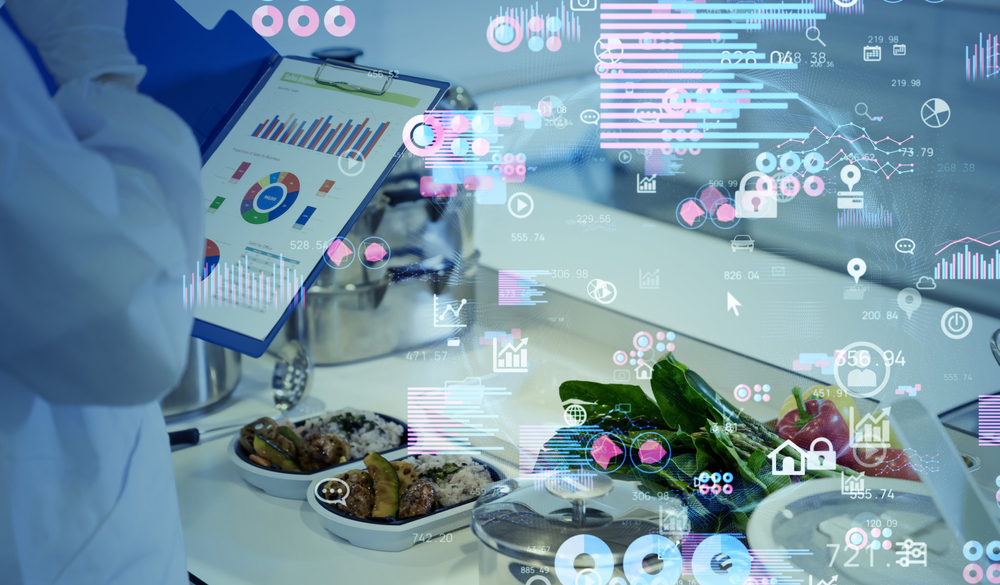Data has become a game-changer in the dynamic world of the restaurant industry. In this blog post, we will delve into the transformative power of restaurant analytics and how they can drive your business toward success.
Discover the benefits of harnessing data in your restaurant operations
From menu optimization to staff management, analytics provide valuable insights to help you make informed decisions and improve overall performance. Uncover hidden trends, identify customer preferences, and fine-tune your offerings to deliver an exceptional dining experience.
Explore the latest analytics tools and techniques designed specifically for the restaurant industry. We will cover restaurant POS system integration, customer relationship management (CRM) software, and social media analytics. Learn how to leverage these tools to gather actionable data to inform your marketing strategies, streamline operations, and drive profitability.
Furthermore, we will discuss the importance of setting key performance indicators (KPIs) and how they are crucial in measuring success. By identifying and tracking the right metrics, such as customer satisfaction, table turnover rate, and average order value, you can monitor your progress and make data-driven adjustments for continued growth.
Additionally, we will delve into predictive analytics and how it can help you stay ahead of the competition. By leveraging historical data and advanced algorithms, predictive analytics can provide valuable insights into future trends, enabling you to make proactive decisions and anticipate customer demands.
Don’t miss out on the opportunity to unlock the power of data in your restaurant. Join us in this blog post as we guide you through the world of restaurant analytics and show you how to use data to drive success in your business. Get ready to make smarter, more informed decisions that will elevate your restaurant to new heights of excellence.
Using Data Analytics for Menu Optimization
One of the most impactful applications of restaurant analytics is menu optimization. By analyzing data and understanding customer preferences, you can make data-driven decisions to create a menu that maximizes profitability and customer satisfaction.
Data analytics allows you to gather valuable insights on customer behavior, such as popular menu items, order frequency, and average spending per customer. By analyzing this data, you can identify your top-selling dishes, understand which items are underperforming, and uncover opportunities for improvement.
Start by examining sales data to identify the high-profit items on your menu. These are the dishes that not only generate substantial revenue but also have a high contribution margin. By highlighting and strategically positioning these items, you can increase their visibility and encourage customers to choose them.
Additionally, leverage customer feedback and reviews to gain insights into their preferences and opinions about your menu. Analyze feedback related to taste, portion sizes, pricing, and dietary restrictions. This information can help you identify areas for improvement and make necessary adjustments to meet customer expectations.
Consider utilizing menu engineering techniques, such as using descriptive language, adding enticing visuals, and implementing pricing strategies, to influence customer choices. Menu engineering takes into account the profitability and popularity of each item to guide the placement, design, and pricing of your menu offerings.
Regularly monitor and evaluate the performance of your menu items. Use data analytics to track sales, profitability, and customer feedback over time. This will help you identify trends, understand seasonality, and make data-driven decisions when it comes to menu updates and changes.
Furthermore, consider leveraging predictive analytics to anticipate future trends and adapt your menu accordingly. By analyzing historical data, market trends, and customer preferences, predictive analytics can help you identify emerging food trends, allowing you to introduce innovative dishes and stay ahead of the competition.
Using Data Analytics for Staff Optimization
Optimizing staff performance is crucial for running a successful restaurant, and data analytics can play a significant role in achieving this. By leveraging data, restaurant owners and managers can make informed decisions to enhance staff efficiency, productivity, and overall performance.
Start by analyzing labor data to understand staffing needs based on different shifts, days of the week, and peak hours. By examining historical sales and customer traffic data, you can identify patterns and trends that will help you optimize staff scheduling. This ensures that you have the right number of employees on hand to meet customer demands without overstaffing, which can lead to unnecessary labor costs.
Data analytics can also help identify individual staff performance metrics, such as order accuracy, speed of service, and customer satisfaction ratings. Tracking these metrics lets you identify top-performing employees and recognize their contributions. Additionally, you can provide targeted training and support for those who may be underperforming to improve their skills and overall efficiency.
The Importance of Setting Key Performance Indicators (KPIs) in Restaurant Data Analytics
In restaurant data analytics, setting Key Performance Indicators (KPIs) is crucial for measuring success and driving continuous improvement. KPIs are quantifiable metrics that help you track progress, evaluate performance, and make data-driven decisions. Here’s why establishing KPIs is essential when utilizing restaurant data analytics:
- Clear Measurement of Success: KPIs provide a clear benchmark for assessing the success of your restaurant. By defining specific KPIs, such as average order value, customer satisfaction ratings, or table turnover rate, you can objectively measure progress towards your goals. KPIs help align your team’s efforts and ensure everyone is working towards common objectives.
- Focus on Relevant Metrics: Data analytics can generate vast amounts of information, and it’s easy to get overwhelmed. Setting KPIs helps you identify the most relevant metrics that align with your business objectives. By focusing on a few key metrics, you can avoid data overload and concentrate on actionable insights that directly impact your restaurant’s success.
- Identify Areas for Improvement: KPIs highlight areas of your restaurant operations that require attention and improvement. By regularly monitoring KPIs, you can identify bottlenecks, inefficiencies, or underperforming areas. This empowers you to take corrective actions, implement process improvements, and enhance overall operational efficiency.
- Track Progress and Measure Growth: KPIs serve as a progress tracker and allow you to measure growth over time. By regularly monitoring KPIs, you can evaluate performance trends and assess whether you are moving in the right direction. This provides a basis for making data-driven decisions and adjusting strategies to ensure continuous improvement.
- Support Decision-Making: When armed with relevant KPIs, you can make informed decisions based on concrete data rather than relying on intuition or guesswork. KPIs provide a basis for evaluating options, comparing alternatives, and prioritizing initiatives. This enhances decision-making capabilities and minimizes the risk of making uninformed choices.
- Accountability and Performance Management: Establishing KPIs promotes a culture of accountability within your team. Each team member can understand their role in achieving the defined KPIs and take ownership of their responsibilities. KPIs also enable you to track individual and team performance, recognize high achievers, and provide targeted feedback for improvement.
- Benchmarking and Industry Comparison: KPIs allow you to benchmark your restaurant’s performance against industry standards and competitors. By comparing your metrics to industry averages or best-in-class benchmarks, you can identify areas where you may be lagging behind or outperforming. This helps you stay competitive and make informed decisions to gain a competitive edge.

